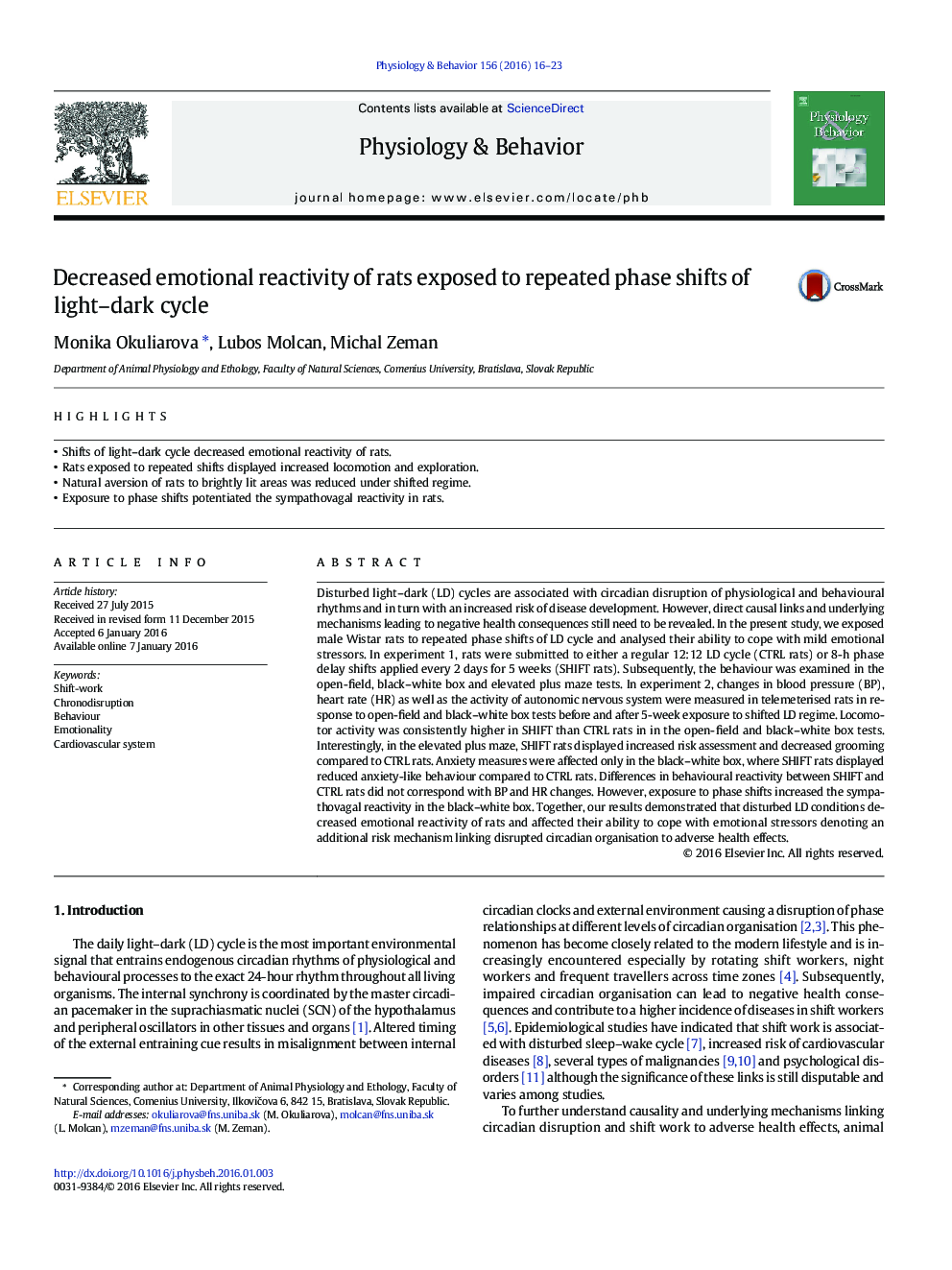| کد مقاله | کد نشریه | سال انتشار | مقاله انگلیسی | نسخه تمام متن |
|---|---|---|---|---|
| 5922974 | 1571162 | 2016 | 8 صفحه PDF | دانلود رایگان |

- Shifts of light-dark cycle decreased emotional reactivity of rats.
- Rats exposed to repeated shifts displayed increased locomotion and exploration.
- Natural aversion of rats to brightly lit areas was reduced under shifted regime.
- Exposure to phase shifts potentiated the sympathovagal reactivity in rats.
Disturbed light-dark (LD) cycles are associated with circadian disruption of physiological and behavioural rhythms and in turn with an increased risk of disease development. However, direct causal links and underlying mechanisms leading to negative health consequences still need to be revealed. In the present study, we exposed male Wistar rats to repeated phase shifts of LD cycle and analysed their ability to cope with mild emotional stressors. In experiment 1, rats were submitted to either a regular 12:12 LD cycle (CTRL rats) or 8-h phase delay shifts applied every 2Â days for 5Â weeks (SHIFT rats). Subsequently, the behaviour was examined in the open-field, black-white box and elevated plus maze tests. In experiment 2, changes in blood pressure (BP), heart rate (HR) as well as the activity of autonomic nervous system were measured in telemeterised rats in response to open-field and black-white box tests before and after 5-week exposure to shifted LD regime. Locomotor activity was consistently higher in SHIFT than CTRL rats in in the open-field and black-white box tests. Interestingly, in the elevated plus maze, SHIFT rats displayed increased risk assessment and decreased grooming compared to CTRL rats. Anxiety measures were affected only in the black-white box, where SHIFT rats displayed reduced anxiety-like behaviour compared to CTRL rats. Differences in behavioural reactivity between SHIFT and CTRL rats did not correspond with BP and HR changes. However, exposure to phase shifts increased the sympathovagal reactivity in the black-white box. Together, our results demonstrated that disturbed LD conditions decreased emotional reactivity of rats and affected their ability to cope with emotional stressors denoting an additional risk mechanism linking disrupted circadian organisation to adverse health effects.
Journal: Physiology & Behavior - Volume 156, 15 March 2016, Pages 16-23